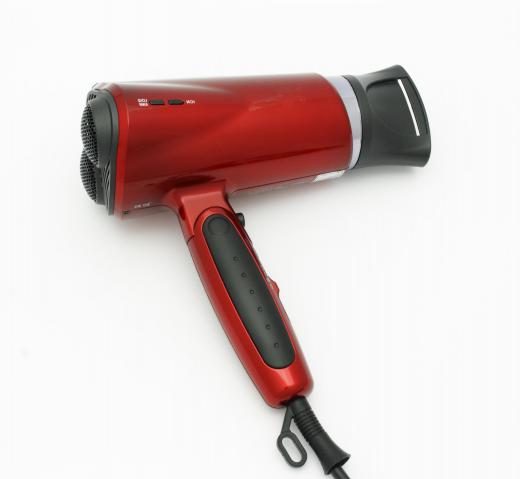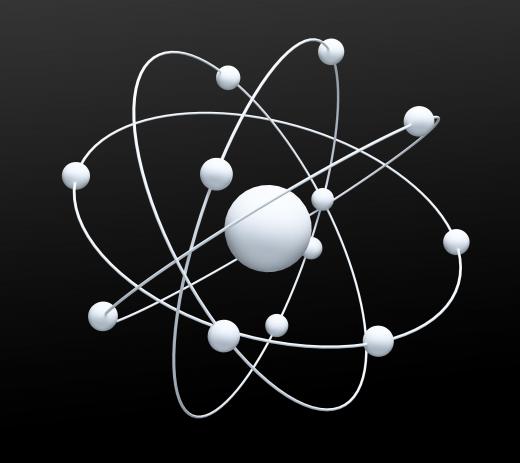What is Ionization?
Ionization is when an atom or molecule gains either a positive or negative charge. It can occur in one of two ways: first, when electrons are either gained or lost by a particle; second, when one atom or molecule combines with another atom or molecule that already has a charge. The charged particle itself is called an ion. Ions that are positively charged are called cations, and ions that are negatively charged are called anions. As well, ions made up of one atom are called monatomic ions, and ions made up of multiple atoms are called polyatomic ions.
Ionization often occurs because of the number of electrons a particle has. Particles with paired (even-numbered) electrons are more stable than those with unpaired electrons; atoms with filled electron shells are also more stable than those with only partially-filled shells. When particles collide and interact, electrons from one atom might be pulled to another in order to give it an even number of electrons or to fill one of its electron shells. An atom with an odd number of electrons and only a single electron in its outer shell would tend to give up its electron in such an interaction. Particles charged through ionization tend not to be as stable as those that naturally have their electron shells filled with an equal number of protons and electrons.

There is a special type of bonding based on ions. This bonding, known as ionic bonding, is caused by the electrostatic attraction between positive and negative ions. This sort of bond usually occurs when two atoms come into contact and an electron from the valence shell of one jumps to the valence shell of another. The jumping of electrons creates two ions, one positively charged and one negatively charged. The ions are attracted to eachother, and ionic bonding can occur. When this reaction happens on a large scale, ionic crystals can form. The chemical reaction between sodium (Na) and chlorine (Cl) that results in table salt is an example of such a reaction.

Ionization is a buzz word often used in retail product marketing. Air ionizers (sometimes written as “ionisers”) use electricity to charge and hopefully clean the air. Water ionizers charge water particles and often claim that there are health benefits for drinking such liquids. Ionic pet brushes claim to remove pet odor and dander by ionizing the air between the animal’s individual hair shafts. Pool ionizers use metal ions and a small electric current in an attempt to kill bacteria. Consumers should research all ionizer products prior to purchase or use.
AS FEATURED ON:
AS FEATURED ON:















Discussion Comments
@ ValleyFiah- Cougars explained how soluble ionic compounds act in solution, but as far as your question goes, I can go into a little more detail. When you mix two ionic equations, sometimes they form insoluble ionic compounds as well as soluble ionic compounds.
An example would be a reaction between Manganese Nitrate and Sodium Hydroxide. When you mix these two solutions together, you get a solid (a precipitate) and another aqueous solution. Your products in the reaction are actually the brown solid manganese hydroxide mixed into a solution of sodium nitrate. The dissolved ions actually reform into different compounds, one of which happens to be insoluble.
This type of reaction can be used in the real world to separate chemical compounds from waste chemicals to create something that is economically valuable. Something like Manganese Hydroxide would be used to test oxygen content in fish tanks so it would have a value as an extracted precipitate.
@ ValleyFiah- Ionic bonds are very strong bonds, but when a soluble ionic compound is introduced to water, it separates into its ions. This is because water molecules have a positive side and a negative side. The side of the water molecule with the two hydrogen molecules has a slight positive charge so they surround the negatively charged anions separating them from the positively charged cations. The opposite is true for the oxygen atom in water molecules.
Think of it in terms of salt (NaCl). When salt is dissolved in water, the salt is separating into its positive sodium cations and its negative chloride anions. The water molecules surround the sodium cations, with the oxygen atom side of the molecule closest to the sodium atom. The negative side of the water molecule (the hydrogen side) surrounds the chloride anions.
Why do you get a solid sometimes when you mix two ionic solutions? I do not get how a solid can form from two liquids. Can someone explain this to me? I thought that ionic bonds were one of the strongest bonds out of all chemical bonds.
Post your comments